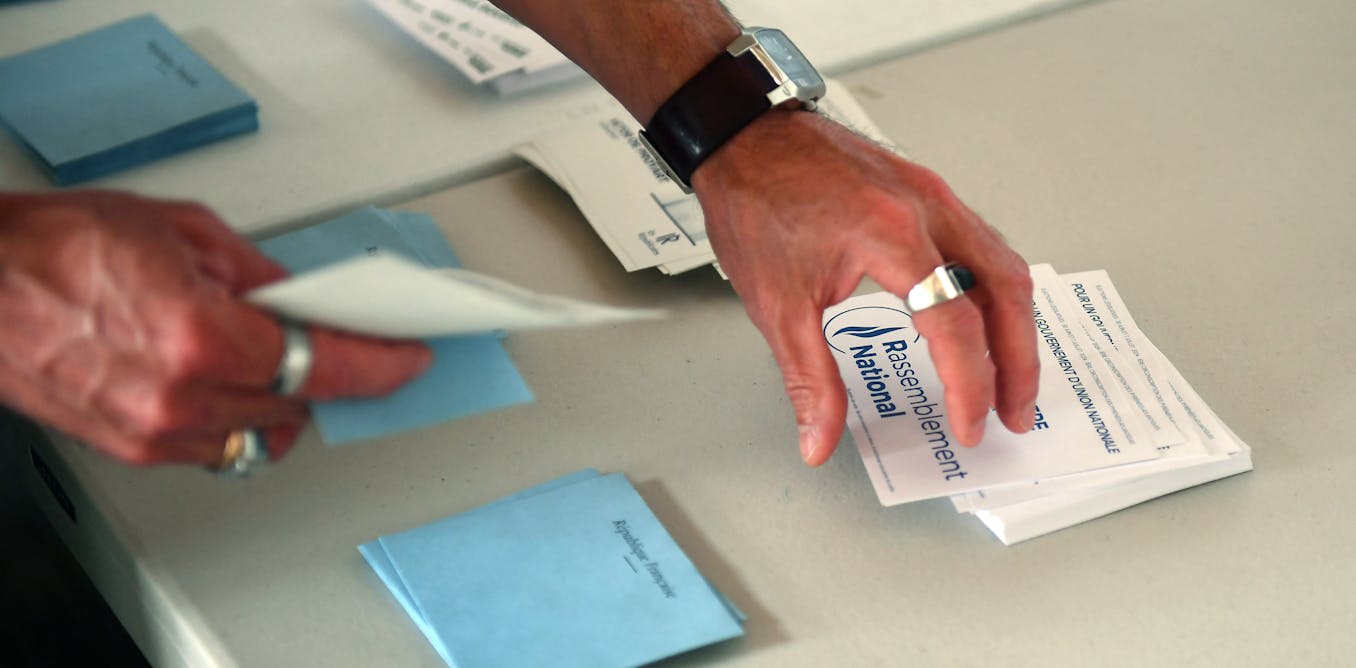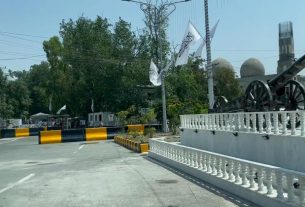|
Getting your Trinity Audio player ready...
|
The first round of France’s snap legislative election was held on June 30. The final results show the far-right National Rally (Rassemblement national, RN) and its allies with 33.15%, the left/progressive coalition New Popular Front (Nouveau Front Populaire, NFP) with 27.99%, and in third place, the presidential alliance with 20.04%. Turnout was 66.71%, the highest since 1978. Mathias Bernard, historian of France’s Fifth Republic, analyses how France got here and what’s at stake.
How do you analyse the National Rally vote? What do you see as the main reasons for it?
The RN’s success is the result of three main phases over 40 years. First came rapid and continuous growth, between 1984 (when the National Front won 10% of the vote in the EU elections and 1988 (when Jean-Marie Le Pen scored 14.5% in the presidential election). This was followed by a period of consolidation between 1988 and the mid-2000s, during which the FN maintained its overall electoral weight (around 15%) but also won several towns in the 1995 municipal elections and reached the second round of the 2002 presidential election. Above all, the FN built up a network of local executives and elected representatives, as though it were a “regular” political party. Finally came a phase of normalisation, which began in 2011, and accelerated growth from 2017 onwards.
The main reason is the RN’s ability to propose what seems like a new political direction and so benefit from voters’ “throw the bums out” sentiment from which Emmanuel Macron benefited at the time. But it was above all its ability to reach a working-class electorate neglected by other parties and propose seemingly simple answers, be it in the field of security, social issues or living conditions.
Has the Fifth Republic ever experienced such a profound crisis?
This crisis is not the first in France’s recent political history. In fact, crises are an essential component of the country’s political life, which has long been marked by a culture of conflict and radicalism as well as the conviction that “everything is political”. Social, economic and cultural divides feed into political confrontations – and that’s what we’re seeing today.
The Fifth Republic itself was established in 1958 during a deep crisis sparked by the war in Algeria. And in the early years of its existence, it was confronted with numerous crises, including an attempted presidential assassination in 1962, dissolution of the National Assembly the same year and the May ‘68 protest movement.
The fact that France’s political institutions withstood all these crises as well as political changeovers and power sharing has no doubt created the illusion of a consensual political life. The situation we have seen over the last 10 years or so proves that this is not the case.
Whatever the final outcome of the election, will Emmanuel Macron remembered as the president who will have potentially brought the National Rally to power?
This is both the paradox and the failure of his presidency. In 2017, he presented himself as the best bulwark against the RN, but in fact he’s contributed to its rise. This paradox is a result of his initial positioning: by seeking to establish political life around two new poles – the conservative nationalists and the progressives – he made the RN the main force of opposition to his policies, which became increasingly unpopular over time.
Since the 2022 legislative elections, Macron and his majority have helped to normalise the RN by implying that the left-wing France Unbowed (La France insoumise, LFI) party constituted the main threat to republican order – witness the campaigns launched against the supposed anti-Semitism of certain LFI representatives as well as his party’s strategy during the legislative election, with constant references to “the extremes”, as though the RN and LFI were equally dangerous.
Finally, his decision to dissolve the National Assembly was incomprehensible. It came at a time when the RN has achieved its best-ever score and Macron’s party had lost any credibility it might have had as a bulwark against the far right. In the short term at least, it was a gift to RN.
The last few weeks have seen an upsurge in street demonstrations, in particular by the New Popular Front against the National Rally – yet there have been none from the RN. How can this paradox be explained?
The mobilisation of the left-wing coalition against the far right has always been part of the continuity of anti-fascist struggles – indeed, their choice of the name “New Popular Front” is a direct reference to the peaceful demonstrations that took place in 1934 in reaction to far-right riots earlier that year. This was the founding act of the Popular Front, which formed a ruling government in 1936.
The far right opted for an electoral strategy in the 1980s, and so abandoned the street activism that characterised it during the 1960s. When Jean-Marie Le Pen qualified for the second round of the 2002 presidential election, his opponents took to the streets, turning the May Day parade into an immense anti-Le Pen referendum. At the same time, the FN did not organise any counter-demonstrations.
The strategy undertaken by Marine Le Pen from 2011 onwards has made the RN even more cautious in its use of the streets. Its support for the “yellow jackets” movement was an exception. It was not the RN that took the initiative for this movement, but it sought to harness its potential to destabilise Emmanuel Macron’s government.
Does what’s known as the “Republican front” still have any meaning? If so, who now embodies it?
The notion of a “Republican front” against the far right no longer enjoys consensus, but it continues to make sense to part of the electorate and the political class. This is what motivated the rapid formation of the New Popular Front. It also what underlays the positioning of several personalities from the moderate right to the Socialist Party – including former president Francois Holland – who want to block the RN in the second round.
In December 2023, for the first time, a majority of French people considered that the RN does not represent a threat to democracy. Moreover, Macron’s repeated evocations of the danger the two “extremes” makes it more difficult to achieve a broad-based coalition against the RN.
Despite a high-profile campaign, the New Popular Front scored 28% in the first round. That put it far ahead of Macron’s group, but still behind the RN.
Although it improved on the results obtained by the divided left in the 2017 legislative elections and the score of the NUPES coalition in 2022, the New Popular Front hasn’t yet been able to establish itself as a genuine challenger to the RN.
There are three main reasons. First, the role of bulwark against the RN was also claimed by the presidential majority, which for much of the campaign spent more time attacking the far-left LFI party than the far-right RN.
Second, the drive to bring the left together came up against strong differences on international issues and economic programmes. These crystallised as much over the issue of anti-Semitism, which was omnipresent during the campaign, as over the divisive personality of Jean-Luc Mélenchon, leader of the LFI.
Finally, the New Popular Front coalition doesn’t yet have a leader to who can embody and carry it forward. In 1997, the left-wing coalition won the parliamentary elections triggered by Jacques Chirac’s surprise dissolution, having given itself an indisputable leader, Lionel Jospin, who had precisely the ability to quickly resolve the differences that are inevitable in this type of coalition.
Interview by Françoise Marmouyet and Clea Chakraverty, translation by Leighton Kille.



